In the United States, alpaca farming has garnered significant attention as an alternative livestock enterprise for small and large-scale farmers. How profitable is an alpaca farm? That’s a question many prospective alpaca farmers ponder, especially when considering how the U.S. market has grown for alpaca products, particularly their fiber, which is soft, hypoallergenic, and flame-resistant. How do you make money on an alpaca farm?
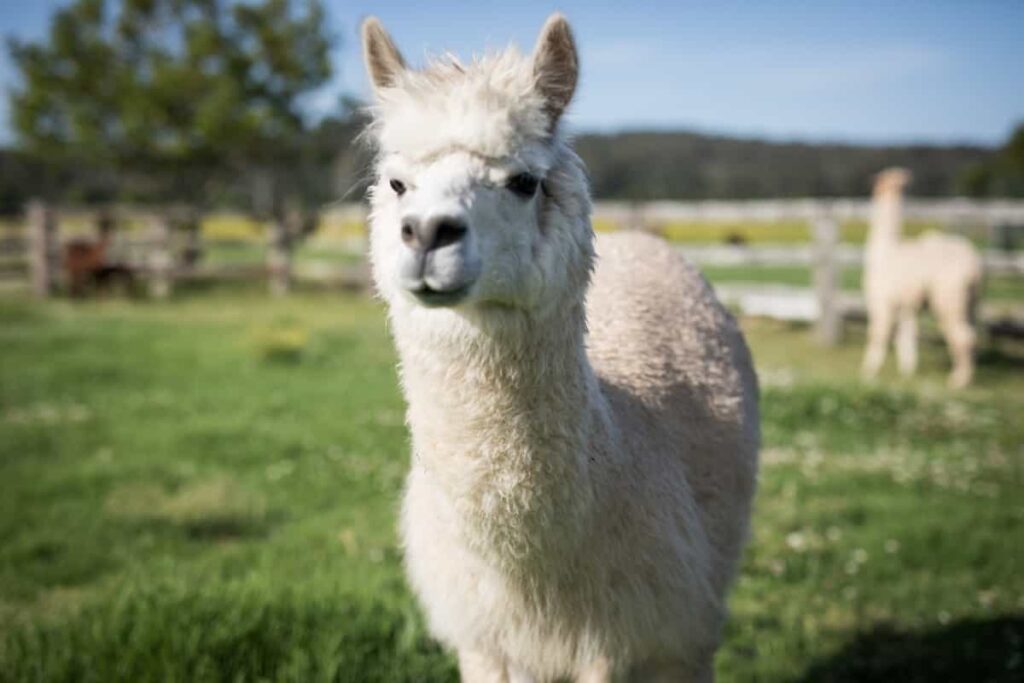
Generally, the avenues for profit include fiber production, breeding services, and agritourism. The question of how much an alpaca cost is essential, as startup expenses can range widely based on factors like the alpaca breed, quality of the fiber, and pedigree. Alpaca farming for beginners can seem daunting, but with proper guidance, it becomes manageable.
Understanding how many alpacas you need to make a profit, alpaca farming profit margins and the best climate for raising alpacas can make this an enticing venture. As a point of interest, many people even wonder how to start an alpaca farm with no money, which, although challenging, isn’t entirely out of reach with grants, loans, and strategic partnerships.
Starting an Alpaca Farm: Step-by-step Guidance
Beginning your journey into alpaca farming starts with adequate research and planning. The first step in your alpaca venture is to decide the scale of your farm and the purpose—whether you’re focusing on fiber production, breeding, or other services. How do you start breeding alpacas? Breeding generally begins with purchasing quality females and a proven stud, followed by a well-structured breeding program. Next, choose a location that suits the best climate for raising alpacas; these animals are quite hardy but do best in moderate climates with low humidity.
Consult with local authorities about zoning laws and necessary permits. Once settled, construct appropriate shelters, feeding stations, and secure fencing to protect against predators. Networking with experienced alpaca farmers and joining local or national organizations can provide valuable insights and support. Additionally, a veterinarian experienced in alpaca care should be identified, and a health care program should be established.
Cost of Establishing an Alpaca Farm: A Detailed Breakdown of the Expenses
The question of how much does an alpaca cost has a complex answer. Prices for an alpaca can range from $200 to well over $10,000 depending on factors like age, pedigree, and fiber quality. Startup costs don’t end with the purchase of the animals. You’ll need to consider the cost of land, which can vary significantly based on location. Building shelters, barns, and fencing can cost upwards of $10,000.
In case you missed it: 20 Best Fruit Rootstock Nurseries in the USA: List for Buying Rootstock for Grafting
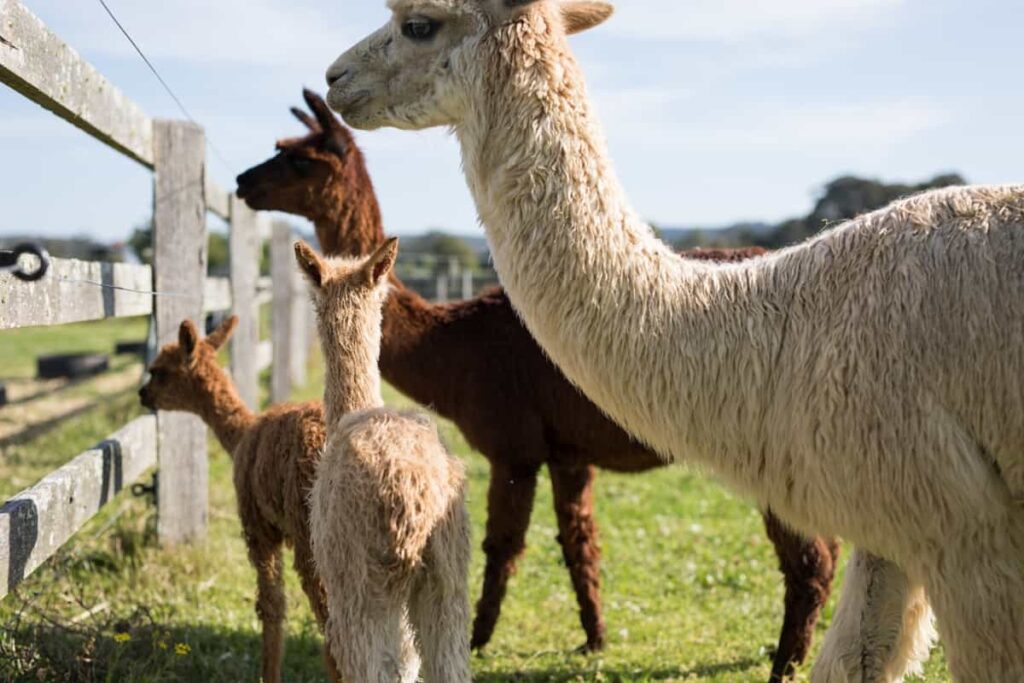
Additional expenses include feed, hay, and mineral supplements, which could range from $200 to $400 per alpaca annually. Vet checkups, vaccinations, and possible emergency care have fluctuating costs. Moreover, shearing and fiber processing equipment is a must if you intend to focus on fiber production. Overall, the initial investment can be hefty, but there are ways to mitigate costs, such as purchasing used equipment or applying for agricultural grants and loans.
Profits in Alpaca Farming in the USA
How profitable is an alpaca farm in the United States? The profitability hinges on several factors, including the alpacas’ quality, health, and the market demand for alpaca products. How do you make money on an alpaca farm? The primary ways include selling the fiber, offering stud services for breeding, and agrotourism. How much is alpaca fiber worth? A single shearing can yield five to ten pounds of fiber, which can be sold raw for $2 to $6 per ounce or more if processed into yarn or other products.
Breeding services can range from $500 to $3,000 based on the stud’s quality. Alpaca farming profit margins can be healthy if managed well, but like any livestock venture, it requires dedication and proper management. How many alpacas do you need to make a profit? Generally speaking, a herd of 20 to 25 alpacas is a good starting point for a profitable enterprise. Agrotourism is another avenue where people pay to visit your farm, learn about alpacas, and even adopt an alpaca for a period.
Alpaca Breeds Suitable for Us Climate: An Exploration of Alpaca Breeds
When starting an alpaca farm, it’s essential to select breeds suitable for your climate and farming goals. The two primary breeds in the USA are the Huacaya and the Suri. The Huacaya alpacas have a dense, woolly fleece, suitable for colder climates and excellent for high-quality fiber production. Suri alpacas have long, wavy locks, ideal for warmer climates and specialty fiber markets. Both breeds have proven to adapt well to various climates across the U.S., although they do best in moderate weather conditions with low humidity.
The best climate for raising alpacas in the USA varies, but these hardy animals adapt well to everything from the cooler climates of the Northern States to the warmer Southern States. However, proper shelter and care are critical to protect them from extreme weather conditions like excessive heat or cold.
Alpaca Nutrition and Feeding: Dietary Requirements
Understanding the nutritional needs of your alpacas is crucial for their health and productivity. Alpacas are ruminants, and their diet primarily consists of high-quality hay or pasture grass, supplemented with grains and specialized alpaca pellets to ensure they get essential vitamins and minerals. Feeding programs should be adjusted according to the life stage of the alpaca, whether they are growing, lactating, or bred females.
In case you missed it: How to Grow Marigold at Home in the USA: From Seeds and Cuttings in the Backyard, and Pots
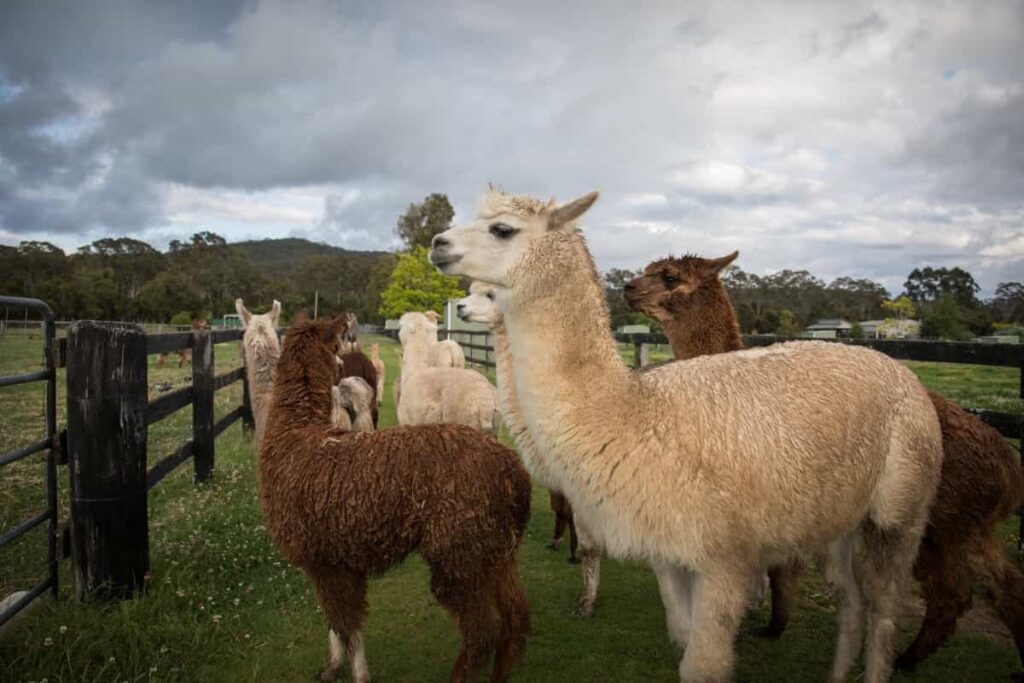
Alpacas also require free access to fresh, clean water. Salt and mineral blocks should always be available to provide necessary trace elements like selenium and copper. Quality hay should constitute most of the diet, especially during the winter when fresh pasture is unavailable. It’s advisable to periodically test your pasture and hay for nutritional content to tailor your supplemental feeding appropriately. Consulting with a veterinarian specialized in alpaca care can provide valuable insights into creating a balanced nutrition plan for your herd.
Alpaca Health Care and Veterinary Services
Routine and preventative healthcare are integral aspects of successful alpaca farming. Regular veterinary check-ups should be scheduled to monitor the herd’s overall health and to administer vaccinations against common diseases like rabies and clostridial diseases. Manage gastrointestinal worms and lice, both internal and external parasites, by implementing regular deworming and applying appropriate topical treatments.
Regular hoof trimming is also essential to prevent overgrowth and associated complications. In case of illnesses or emergencies, having a relationship with a reliable veterinarian becomes invaluable. Many alpaca-specific health issues, like heat stress or birthing complications, require immediate professional intervention. It’s also essential to keep a well-stocked first-aid kit on-site and maintain records of each animal’s medical history for prompt and accurate treatment.
Alpaca Fiber Production and Processing
One of the most lucrative aspects of alpaca farming is fiber production. The fiber from alpacas is known for its softness, durability, and insulating properties, making it highly sought after in textile markets. Alpacas are generally sheared once a year, preferably in the spring, to ensure optimal fiber quality and animal comfort. After shearing, the fiber must be sorted, washed, and carded before spinning it into yarn.
Raw alpaca fiber can fetch a good price, but value-added products like yarn, clothing, and other textiles can substantially increase profits. Knowing how to shear your alpacas or hiring a skilled shearer properly is essential to preserve the quality of the fiber and prevent damage to the animal. Networking with other alpaca farmers and fiber artisans can offer opportunities for collaboration and better market access for your finished products.
Alpaca Breeding Practices: Reproductive Management Techniques
Efficient breeding practices are vital for the sustainability and profitability of an alpaca farm. Alpacas lack a designated breeding season, affording greater flexibility in breeding schedules. Unlike other livestock, alpacas practice induced ovulation, which means that the female ovulates due to the act of mating, making timing less critical. However, reproductive management techniques such as controlled mating, regular reproductive health checks, and ultrasounds for pregnancy detection are vital for successful breeding.
In case you missed it: 12 Best Agriculture Business Ideas in the USA: A Beginners Guide for Making Profits
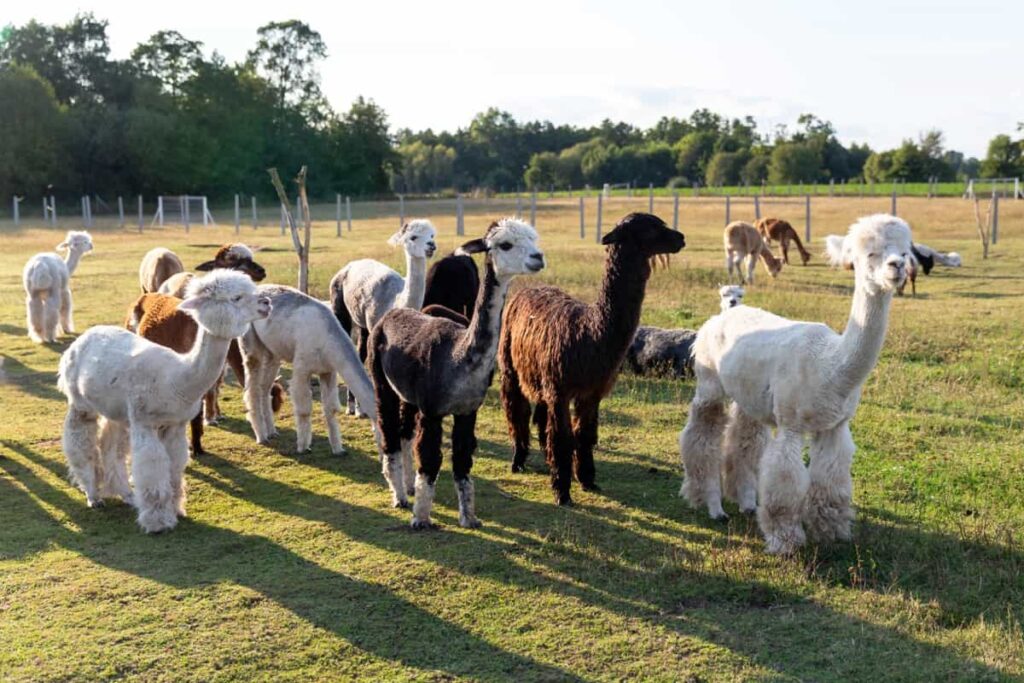
Generally, females are bred for the first time between 18 and 24 months of age and can continue to produce offspring until they are about 12-15 years old. Choosing high-quality studs based on fiber quality, pedigree, and overall health is essential for improving herd genetics. Record-keeping is equally important; noting details like mating dates, birthing dates, and any complications can help successfully manage your breeding program.
Alpaca Farming Regulations and Permits in the USA
Compliance with state and federal regulations is mandatory for any agricultural enterprise, including alpaca farming. Before establishing an alpaca farm, consult with local authorities about land-use zoning to ensure that livestock farming is permitted in your chosen location. Certain states may also require permits for water usage, waste management, and possible environmental assessments.
Animal welfare standards must be adhered to, with regular inspections possibly taking place to ensure the animals are kept in humane conditions. Additionally, there are specific requirements for interstate transport of alpacas, usually requiring health certificates issued by a veterinarian. Not following rules and permits can lead to fines, legal trouble, and the farm shutting down. It’s smart to do good research and talk to legal experts to handle rules well.
Which State Has the Most Alpaca Farms?
Regarding the prevalence of alpaca farms, different states in the USA have varying degrees of concentration. The data tends to shift but states with a strong agricultural background and suitable climates, like Oregon, Ohio, and Pennsylvania, often rank high regarding the number of alpaca farms.
These states offer a robust support system for alpaca farmers, including local organizations, events, and agricultural extension services that provide valuable resources. However, it’s important to note that alpaca farms can be found in almost every state, reflecting the adaptability of these animals to various climatic conditions and the growing interest in alpaca farming nationwide.
What is the Best State to Raise Alpacas?
Identifying the best state to raise alpacas involves a multifaceted evaluation that includes climate, availability of resources, and market access. While the alpaca can adapt to various climates, moderate weather conditions with low humidity are generally preferable. States like Colorado and Oregon often come up as favorable locations due to their suitable climates and strong agricultural communities.
In case you missed it: Top 15 Agricultural Universities in the USA: Best List
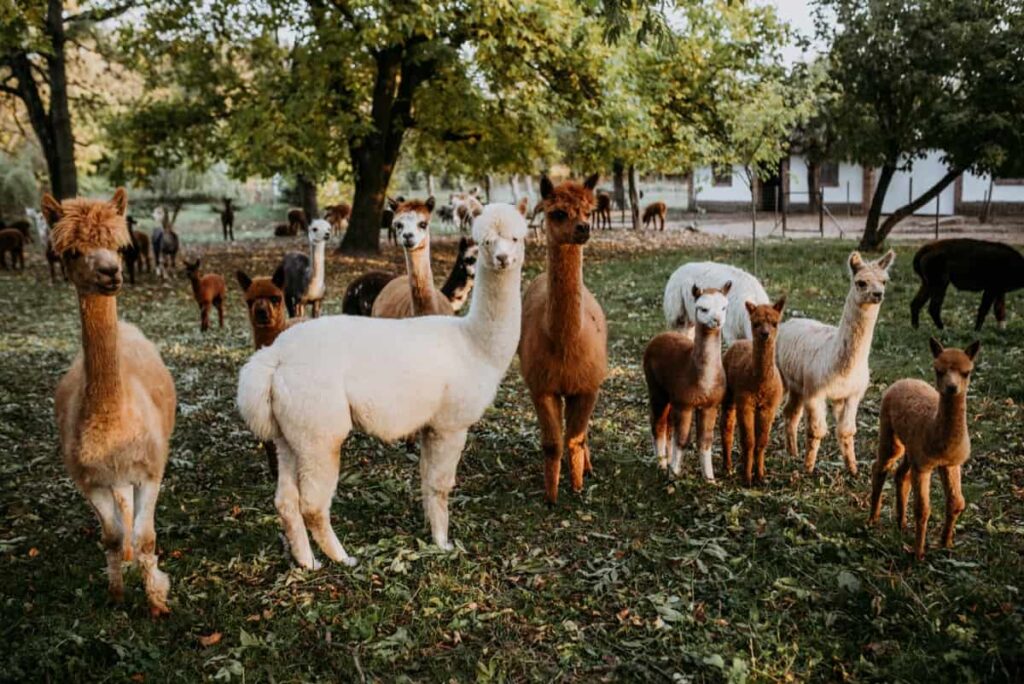
The best state for you would also offer accessible veterinary services, feed stores, and fiber processing facilities, reducing operational difficulties. Proximity to a market that appreciates the value of alpaca products locally or within reasonable shipping distances is another crucial factor to consider.
Strategies for Marketing Alpaca Products
Successful alpaca farming isn’t just about raising the animals; effective marketing strategies are key to turning a profit. The alpaca fiber and products market is diverse, ranging from raw fiber and yarn to finished garments like sweaters and scarves. Direct sales at farmers’ markets, online platforms, and agritourism are effective ways to sell your products.
Utilizing social media for brand building and customer engagement can significantly boost sales. Partnerships with local artisans and textile manufacturers can also open new revenue streams. Don’t overlook the potential for agritourism; farm visits can generate income and serve as a promotional tool for other products and services you offer.
Challenges and Risks in Alpaca Farming
Like any agricultural enterprise, Alpaca farming comes with its challenges and risks. Market fluctuations for alpaca products, susceptibility to diseases, and potential birthing complications are some of the inherent risks in this business. Operational challenges include the high initial cost of setting up the farm and the ongoing need for proper care and management.
Extreme weather conditions can also be a risk factor, requiring appropriate shelter and care practices. Moreover, a lack of familiarity with alpaca-specific veterinary care can lead to health issues. Insurance for livestock, farm operations, and products can mitigate some financial risks, while constant learning and networking with other farmers can help you avoid operational challenges.
Continuous Learning and Adaptation
The journey in alpaca farming is a constant learning experience that requires adaptability to new trends, technologies, and market demands. Join alpaca farming associations, subscribe to industry journals, and network with other farmers to keep abreast of best practices and emerging opportunities. Being open to continual learning ensures that you’re keeping your alpacas in the best possible health and optimizing your farm for maximum profitability and long-term success.
Conclusion
Alpaca farming in the USA presents a unique and potentially profitable agricultural venture that appeals to small- and large-scale farmers. From understanding the costs involved and the best states for raising these fascinating animals to marketing strategies and dealing with challenges, alpaca farming requires dedication, education, and savvy business practices. As the market for alpaca products continues to grow, so does the opportunity for entering this rewarding field.
In case you missed it: USA Vegetable Planting Calendar: Month-wise Guide, Schedule, and Chart for All Zones
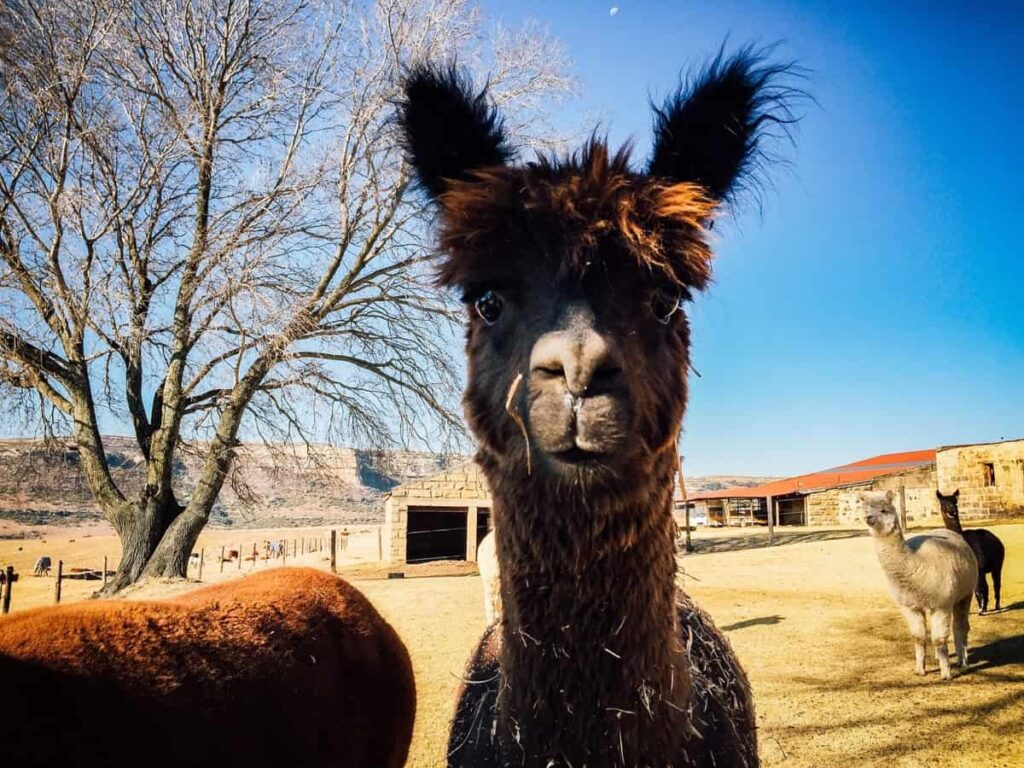
By taking a comprehensive approach—considering everything from location and breeds to healthcare and marketing—you can turn your alpaca farming dream into a lucrative reality. Whether you’re interested in fiber production, breeding, or agritourism, a niche in the alpaca industry is waiting for you. With proper planning and commitment, alpaca farming can be profitable and fulfilling.
- Profitable Village Farming Business Ideas in 2024
- High-Yield Aquaculture: Fast-Growing Fish for Farming
- Effective Fish Pond Construction Techniques for Beginners
- Irrigation and Water Management in Pineapple Farming
- Blossom to Harvest: Mastering Flowering and Pollination in Papaya Farming
- Pig Fattening Essentials: From Selection to Sale for Beginners
- Raising Wagyu Cattle: A Complete Guide for Premium Beef Production
- Soil Types and Their Water Holding Capacity
- Optimizing Irrigation Schedules for Coconut Groves for Enhanced Yield
- Espresso Your Garden: Coffee Grounds for Healthier Acid-Loving Plants
- The Best Soil Mix for Snake Plants: How to Mix Your Own Snake Plant Soil
- Green Thumb Success: Expert Tips for Cultivating Greenhouse Beans All Year Round
- Bloom All Year Round: The Ultimate Guide to Indoor Hyacinth Care
- Eco-Friendly Gardening: How to Make Liquid Fertilizer from Kitchen Waste
- Ultimate Guide to Grow Anise in Pots: Explore Seed Propagation to Harvesting
- Guide to Raising Chester White Pigs: Discover Breed Facts to Growth Management
- Mastering the Elegance: The Ultimate Guide to Weeping Cherry Tree Care, Planting, and Maintenance
- Ultimate Guide to Planting Garlic in Grow Bags: Growing Strategies for Beginners
- How to Fix Spider Plant Leaf-Related Problems: Natural and Organic Remedies
- 10 Reasons Why Your Tulsi Plant is Shedding Leaves: Home Remedies and Solutions
- Optimizing Growth and Yield: The Advantages of Palm Bunch Ash Fertilizer
- Utilizing Neem Oil Extract as a Natural Pesticide for Hydrangea
- From Soil to Harvest: Various Ways in Which Farmers Can Use AI Tools
- Steps to Encourage and Induce Citrus Flowers: A Comprehensive Guide
- How to Fix Snake Plant Leaf-Related Issues: Natural and Organic Remedies
- Transform Your Garden into a Fragrant Oasis with Raat Ki Rani (Night Blooming Jasmine)
- Discover the Ideal Chicken Breeds for Philippine Farms
- How to Create a Poultry Egg Farm Business Plan for Profits
- Grow Lemon Cucumbers Like a Pro: Insider Techniques for Bountiful Yields
- Ultimate Guide to Caring for Your Pink Princess Philodendron: Tips for Thriving Variegation
- Areca Nut Profit Per Acre: Calculating Yield and Cost of Cultivation
- How Kaveri Chicken is Becoming a More Profitable Breed in Indian Backyards
- Transform Your Barn: 9 Steps to Convert a Horse Stall into a Chicken Coop
- Exploring Suffolk Sheep Disadvantages with Limitations and Challenges
- Guide to Solving Potted Lemon Tree Problems: How to Revive Lemon Tree in Containers
- Steps to Encourage Female Pumpkin Flowers: Best Strategies for More Flowers and High Yields
